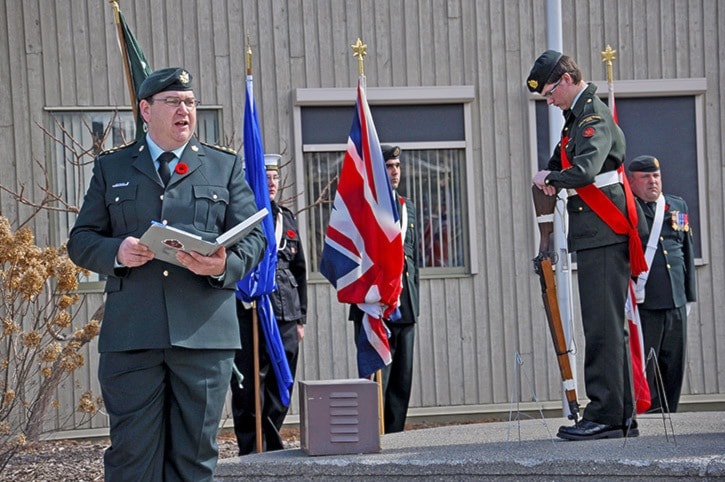By Captain Bill Sheridan
Special to Tribune/Advisor
The Battle of Vimy Ridge took place on the Douai Plain in the French countryside from April 9 to 12 1917.
It was here that 170,000 Canadian soldiers from all four Canadian Army divisions fought together for the first time.
The ridge, (Hill 145 as it was known) seven kilometres long, was the highest point in the area and was under occupation of the Imperial German Army.
Since 1915 the British and the French tried and failed to take the ridge.
The Germans had dug in and fortified their positions with barbed wire, tunnels, machine gun nests and observation posts.
They had an uncompromising advantage over any advancing army. In the fall of 1916 Field Marshall Douglas Haig, Commander of the British Imperial and territorial forces, commanded that the Canadians be given the task of capturing the ridge.
The Canadians, under the command of Julian Byng a British General were pulled off their lines throughout France, and were consolidated at Vimy Ridge.
For the next several months they trained on a mock up of the ridge and learned to fire German weapons.
Officers would carry flags that represented artillery fire and the Canadians would follow the flagged officers. Engineers and tunnelling companies created a network of tunnels, and planted munitions under enemy positions.
The plan for the attack came right down to the last man knowing the objective.
The Canadians at Vimy came from all parts of the country and the Cariboo was no exception. According to documentation not less than nine men from the Cariboo Region fought at Vimy Ridge. Four of the nine men fought with the 54th Canadian Expeditionary Force (Kootenay Battalion) who fought on hill 145 where the infamous Vimy monument stands today.
Prior to the battle, trench raids were carried out on March 1917. March 1 saw the worst day for Canadian casualties where 637 men were killed including Private John Hugh Ellis when his regiment failed to raid German positions after a botched Canadian gas attack.Four days later Edwin Percival Snider, a soldier from the Cariboo was also killed during trench raids.
The raids ceased on April 8, which was the original date the battle was to take place.
However, command pushed back the advance to the next morning. On April 9, 1917 at 5:30 a.m. the Battle of Vimy Ridge ensued under sleet and snow.
Pre-planted munitions were detonated to alleviate some of the German strongpoints and the advancing Canadian infantry were protected by a wave of artillery fire known as “creeping barrage.”
But the men of the 54th with their counterparts from the 102nd CEF could not take Hill 145 on the first day. Reserves from the 44th and 50th CEF were called up to assist in the advancement on the morning of April .
It was the evening of April 10 that Hill 145 fell to the Canadians.
The battle would last two more days and would see 3,598 Canadians dead and another 7,000 wounded.
Vimy was a Canadian battle, Canadian planned, lead and executed. Historians have said it was Canada’s defining moment in the Great War. Some even call it the birth of our nation including Brigadier General A. Ross Director of the 1st Canadian Field Ambulance Corps.
In truth, the British did not even think the Canadians would make it up the hill let alone take the ridge. It showed our resolve, and how the entire Canadian Force came together to accomplish what its founding nations couldn’t — victory!
Editors note: Captain Bill Sheridan is the Commanding Officer of the 3064 Rocky Mountain Ranger Army Cadets.
